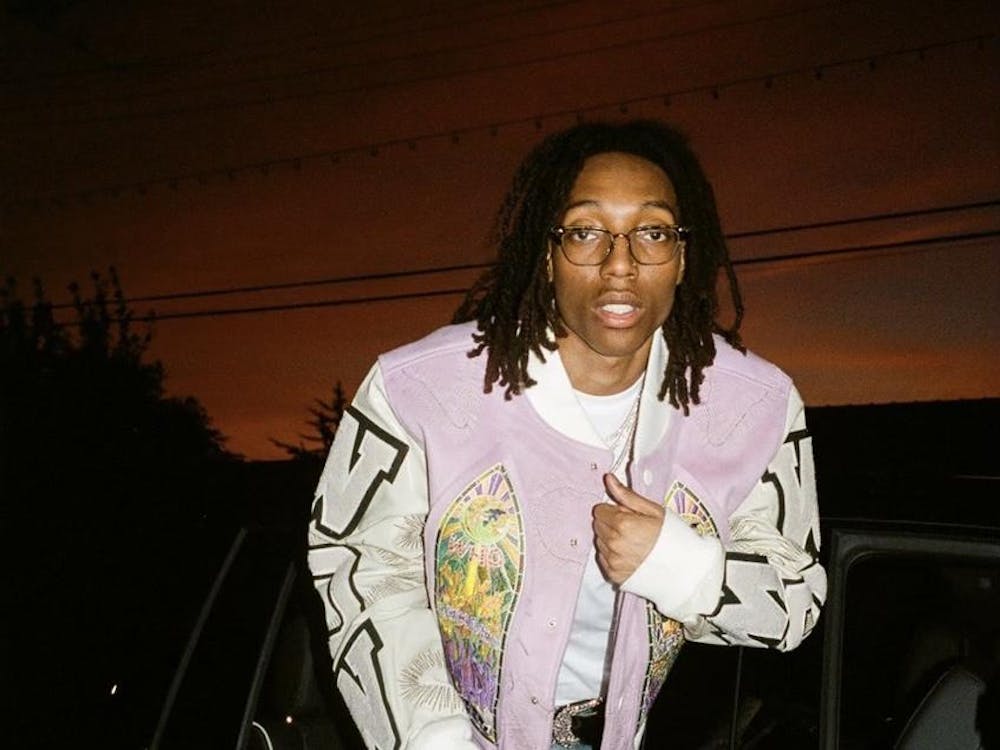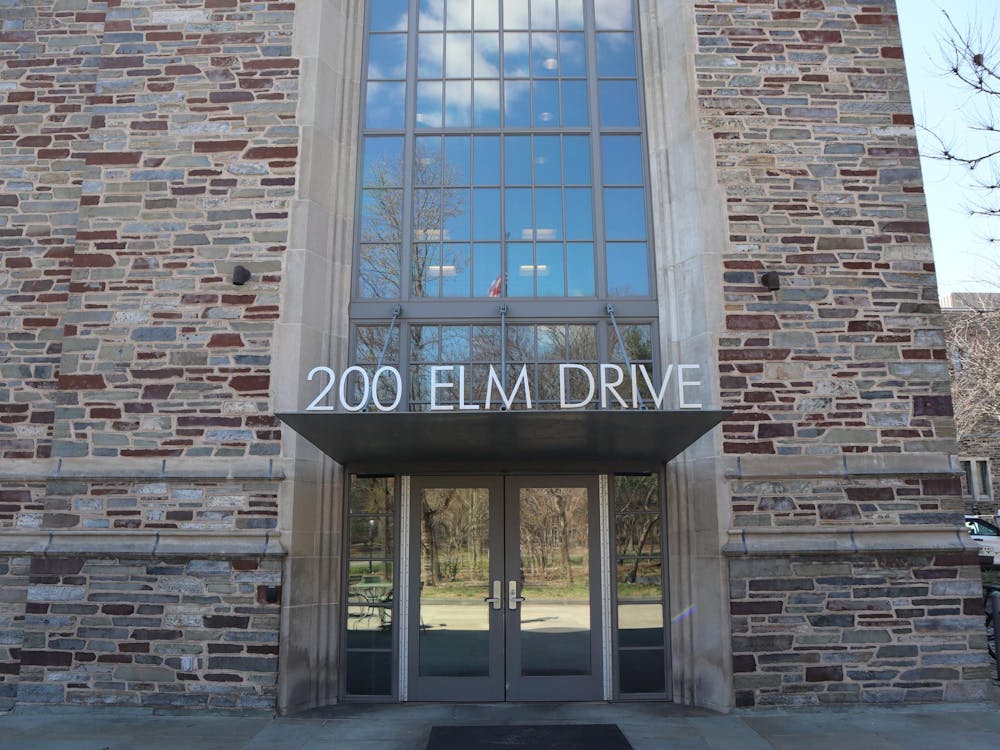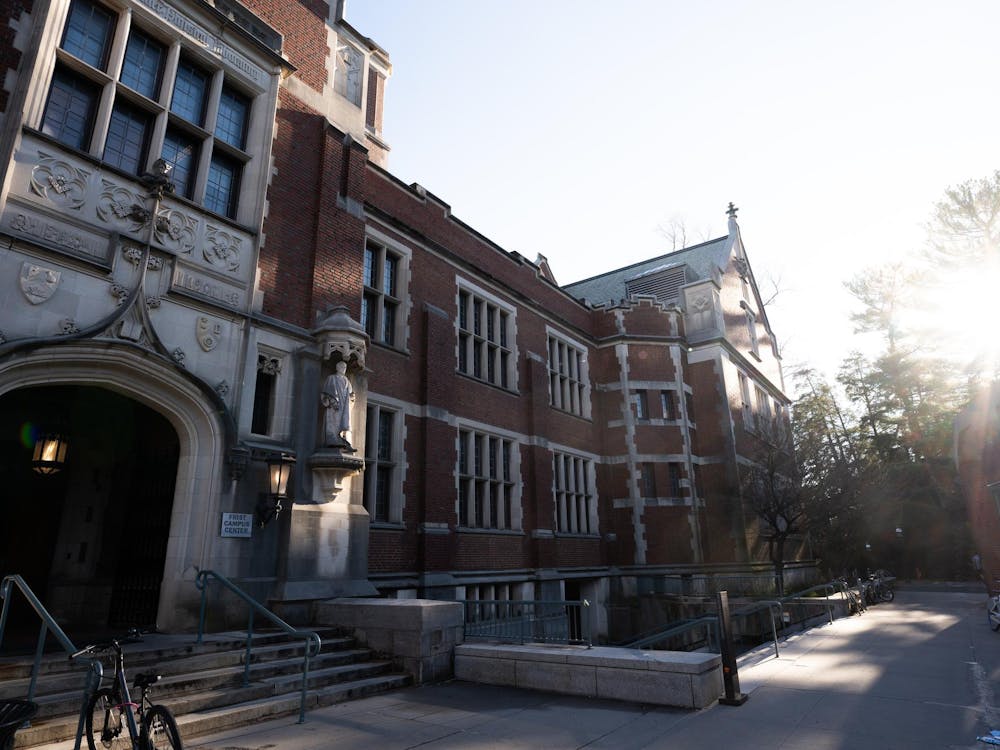In the 1970s, the African-American community on campus expanded to include women. The Third World Center was also developed as a social space for the community, which helped to organize a number of protests and sit-ins for anti-apartheid divestment campaigns.
1970s: Women are welcomed on campus
In the fall of 1969, women were officially admitted into the University's first coeducational program. Among the 171 new female undergraduates, the first African-American female undergraduates at the University were also enrolling.
Women on campus quickly made their mark: the valedictorian and the salutatorian of that first coeducational class were both women,Melanie Lawson ’76 said.
The University was still adjusting to the change — for example, the bathroom doors in many buildings had the letters “W-O” painted in front of “Men,” she explained. Sometimes, the urinals had not been removed.
The men at the University with whom she interacted were supportive, she said.
“I found that the African-American men who were my classmates and in the classes a few years above me were very protective and really looked out a lot for us, and I really appreciated that a lot,” she said.
Lawson didn't experience discrimination or difficulty from other men either; the men on campus were generally respectful, she added.
“If they ever felt like there was a situation in which they felt that the women were being picked on, like if a black woman was being picked on, they pretty much would rush to your rescue,” she said.
Karen Ruffin ’86 said she felt more conscious of her race than her gender in some situations.
“The last thing that came to my mind was that it was because I was female,” Ruffin said. “The first thing that would come to my mind was because I’m black.”
Melvin McCray ’74 said black women had a particularly hard journey because they were very few in number.

“I think that the journey of black women at Princeton is a different one than black men, because black women had the double whammy of being black and female,” he said.
October 1971: Building a home — The Third World Center
When Carl Fields first arrived at Princeton as an assistant director of student aid, there were 12 black undergraduates in the student body. When he left the University to become a planning officer in Zambia in 1971, there were more than 300.
By the 1970s,a number of colleges, including Stanford and Yale, had established black houses, which were houses or centers designed for black students to congregate together as a community.
The African-American community on campus decided the University needed to have one too and began to push for the creation of a social space, McCray said.
“[The campaign for a social space] was something that was started by a group of black students sitting around their dorm and realizing that they didn’t have access to an eating club, they didn’t have really a place other than the larger suites where they could, you know, give a party or something every now and then, but they didn’t have a home for some of their social activities,” he explained.
Few African-American students wanted to join eating clubs, which had a stringent application and hard Bicker process, and often registered for meal plans at Wilson College instead, he added.
“At the time, I kind of considered the eating clubs to be much more elitist,” Lawson said. “Most of them were largely white, and I didn’t feel as comfortable — I didn’t think I’d feel as comfortable there.”
Jim Floyd ’69, former secretary of Tower Club, also said the eating clubs were not particularly attractive to the African-American student body back then and, to some extent, today.
“Many people see the clubs as being alcohol-fueled, and many of the parties that black students have, and I still understand this to be true today, are not alcohol-fueled,” he said. “They may be music-fueled, and they may be having a good time spontaneously fueled, but they are not alcohol-fueled.”
In 1970, a group of students piled into two cars and went to the house of then-University President Robert Goheen ’40 to talk to him about creating a social space.
The University was initially very hesitant about giving into the request for a separate socialization space for the African-American students, McCray said, as it believed that students should try to make an effort to integrate into the existing community instead of creating their own.
According to McCray, the students were unsatisfied by this decision and mobilized on campus in several ways, one of which included the takeover of the reading room in Firestone Library, where several African-American students refused to leave until the proctors were called in.
Though there was a disciplinary hearing, the students were not charged because the jury believed that the reasons for the sit-in were legitimate.
“This was just one step toward asserting their identity and asserting the need to have a Third World Center, as it turned out to be,” McCray said.
According to McCray, the space was called the Third World Center instead of a black houseas there were a number of Latino students on campus, and the space was to be made all-inclusive.
University Trustee Brent Henry ’69,a young alumni trustee at the time, said that many members of the African-American community remained concerned that the trustees did not support the Center.
He added that students protested by blocking the trustees from entering the meeting in which they were scheduled to discuss the creation of the Center.
One of the highlights of his time as young alumni trustee was being able to convince them to let the trustees pass,Henry said.
The trustees approved the concept and appropriated funds to refurbish the old Osborne Field House for the creation of the Third World Center, which later became the Fields Center.
The Third World Center allowed her to interact not only with African-Americans, but also the diverse community of other Hispanic students and Asian-American students, Lawson said.
“I can remember that we would go down there and play cards a lot. It was always fun,” she said. “There was always a good Bid Whist game going on at the Third World Center. We would go down and listen to music and dance.”
Rhinold Ponder ’81, former co-chairman of the Center, said he also met a number of Native Americans and LGBT activists there.
“I enjoyed the Third World Center, which was a great meeting place for people of all types of religions, ethnic and racial backgrounds,” he said.
For some students, the social space took on an extreme importance, Ruffin said.
“That’s where we hung out, that’s where we spent our free time, that’s where we studied, that’s where I spent 90 percent of my time when I was writing my thesis and that’s where we had our parties and everything,” she explained.
1972: A beginning from an end — the formation of ABPA
Just as their journeys as undergraduates were about to end, Howard Bell Jr. ’70, Michael Calhoun ’70, W. Roderick Hamilton ’69, Henry Kennedy Jr. ’70, Jerome Davis ’71, Carl E. Drummond ’71 and Girardeau Spann ’71 came together to form the Association of Black Princeton Alumni.
“The ABPA is a remarkable organization, and I’ve seen over the years the growth of the organization and the force of the organization on campus,” Ruffin said. “They serve a necessary purpose.”
The ABPA’s mission wasto strengthen the relationships among African-Americans in the University community through networking and mentoring and to strengthen the relationship between African-American Princetonians and the University community.
“Back then, as I recall, there was a small group of people at the ABPA who tried to come back and give back to the students, help students, counsel students and give to the students,” Ponder said.
February 1978: The daily protests and a storm
Anti-apartheid movements all over the world called people to pressure their governments to break diplomatic ties with South Africa and encourage companies based in their countries to discontinue business transactions with South Africa. College campuses were no strangers to this kind of social activism.
In January 1977, a new student group, the People’s Front for the Liberation of South Africa, took the lead in organizing the divestment protests,according tothe Mudd Manuscript Library.
On college campuses, boards of trustees were also being asked to divest their stock portfolios of companies that did business in South Africa, said Lawrence Hamm ’78, one of the leaders of the divestment protests at Princeton.
“What we did on campus was have a number of activities — protests, marches, educational forums, letter-writing campaigns — you name it, we did it,” he said.
On Feb. 1, daily protests began behind Nassau Hall to try to convince the Board of Trustees to divest from South Africa.
“We thought that we needed to do something that was different, because what we were doing was having these periodic demonstrations that were basically getting the same people out,” Hamm explained.
For almost an entire month, only about 10 to 25 students gathered behind Nassau Hall every day to walk the picket line and beat their makeshift drums crafted from emptied trash receptacles and big, heavy sticks.
“We were not well-received,” Hamm said. “People would walk by. They would curse at us. Sometimes, people would throw their soda at us.”
On March 5, a snowstorm approached that was violent enough to be the possible end of the daily protests, Hamm said.
“I was in my room, and I said ‘Boy, this is going to be the end of the daily protests,’ ” he said. “But I dragged myself out of my room, I came on up campus, we started beating on those trash cans, those same dozen people showed up.”
He was surprised because he did not think they were going to show up, he said, but about 110 students in total had braved the storm to walk the picket line.
“Everybody had the same thought — this is going to be the day that the picket dies and we can’t let it die,” Hamm said.
From that day forward, the line got bigger and bigger, Hamm said. The daily pickets consisted of between 400 and 600 students, without the organizers even making a phone call.
“It was wonderful,” he said. “People were saying that they hadn’t seen anything like this since the Vietnam War.”
The University claimed it had no connection to the companies in question, but the People’s Front for the Liberation of South Africa began investigating these claims.The students then printed an alternative newspaper showcasing evidence contrary to the University's claims, Hamm said.
The students then conducted a poll and found 55 percent of students on campus supported at least partial divestment.
The fight for divestment was successful, even though the University was one of the few in the nation that did not fully divest, Hamm said.
“The real victory was getting students who had been apathetic and disinterested and some of them even initially opposed to what we were doing to, in fact, winning them over and having a student movement on the campus that rivaled that which had occurred during the Vietnam War,” he said. “That was the real victory.”
April 1978: A historic sit-in for divestment
The anti-apartheid movement was gaining momentum at other colleges like Stanford and Harvard, where sit-ins had become increasingly common.
Anticipating a similar reaction from the University’s students, Jerrold Witsil, the University's director of security, made an announcement on the front page of The Daily Princetonianthat there would be no sit-in at Princeton.
“If he hadn’t said that, there might not have been a sit-in at Princeton University,” Hamm said. “He was indirectly challenging us, and that was the icing on the cake. We said, ‘Let's go.’ ”
Some people were willing to sit-in, some to camp out all night long and some to provide the rest with things like sandwiches and blankets.A mock sit-in was soon run at the Third World Center, where 200 volunteers showed up.
Before the sit-in, Hamm said he returned home to inform his mother of his intent to participate. His mother was very upset because he had already been expelled in middle school and had withdrawn from, with intent to return to, the University for career-related reasons before. She cried and begged him not to throw away his life by risking his imminent graduation, Hamm said.
“I said, ‘Ma, I can’t ask other people to do something I’m not going to do myself,’ ” he said. “You can’t do that.”
Hamm added he could not expect everyone to participate, because many students could not risk the education their middle-class families had invested in so heavily.
Nevertheless, on April 14, some students dressed up as businessmen made appointments with a variety of administrators in Nassau Hall. While one group of predominantly white students dressed up as corporates, the rest of the people moved up campus and hid in a lower-level classroom of Dickinson Hall.
At the appropriate moment, the ‘corporates’ opened up all the exits to let 210 students into Nassau Hall, while 300 kept vigil outside.Nassau Hall remained occupied for 27 hours.
Upon a meeting, the Board of Trustees indicated that they would consider divesting from some selected companies.
Toward the end of the sit-in, the students voted on whether they should leave the next day, with a majority vote being cast in favor. However, some people wished to be arrested, believing an arrest would enhance the effectiveness of the sit-in.
“By pulling off this sit-in successfully, we had proved our point just as effectively as if we would have if we did get arrested,” Hamm said, adding that the students didn't have adequate money for bail and lawyers.
The occupation of Nassau Hall on April 14-15, 1978, resulted in disciplinary hearings for all those involved.
“We understood the anger at some instances and the frustration at other instances that prompted the protests,” Bowen said. “But we were always clear that there was a limit to which these protests could go.”
The University’s faculty voted in support of the students, and the administrators of the Third World Center printed a statement of support for the students in a number of publications.
“Because we had all the support on campus ... all of us graduated,” Hamm said.
According toMudd Manuscript Library, 205 students were ultimately given official warnings in connection with the sit-in.
Hamm was later awarded The Daily Princetonian’s Humanitarian Award, he said, adding that someone ran up on stage and hit the editor in the face with pie at the ceremony.
“It was embarrassing. It was very embarrassing. It wasn’t funny at all,” Hamm said. “That represented the kind of opposition that was on the campus against what we were doing. Because as strongly as we felt for divestment, some people felt against divestment.”
Princeton never fully divested from South Africa, despite many revisions of its policy. In 1994, the Board of Trustees voted to revoke the “selective divestiture” policy, when the end of apartheid rendered it moot.
This article is the third in a five-part Black History Month feature series. Check back tomorrow for a look at the University in the 1980s and 1990s.








